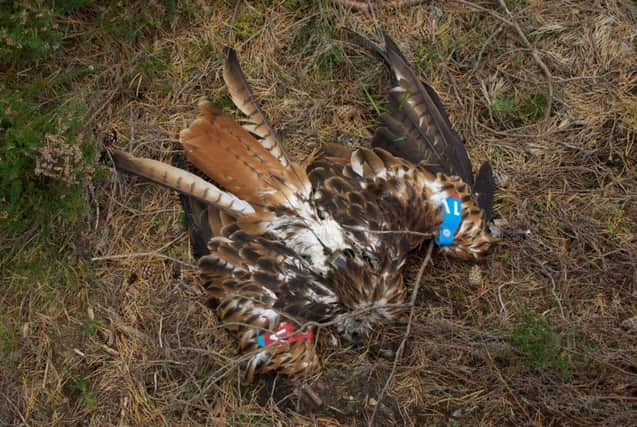Red kites were shot and poisoned in the Highlands


The Scottish Agricultural veterinary laboratory in Inverness said the first bird, found dead last June near Beauly, had been shot.
A second red kite found three months later, about five kilometres south-east of Cawdor village in Nairnshire, was found to have been poisoned with a banned pesticide.
Advertisement
Hide AdAdvertisement
Hide AdThe female bird was part of a successful breeding pair at Cawdor Castle – the first breeding record of red kites in the area for more than 100 years.
Both of the birds of prey had been fitted with satellite tags by RSPB Scotland as part of a wider project to follow their movements and look at factors influencing their survival. The charity claims it is doubtful whether either of the carcasses would have been found if the tags had not been in place.
Both of the crimes happened shortly after the illegal poisoning of at least 12 red kites and four buzzards on the Black Isle near Conon Bridge.
No-one has been arrested in connection with any of the incidents.
Duncan Orr-Ewing, head of species and land management for RSPB Scotland, said: “Since red kite reintroductions began in Scotland in 1989, more than 100 birds have been confirmed as illegally killed, with a significant majority of the victims found poisoned.
“The real figure will be much higher as the finding of these satellite-tagged birds demonstrates.
“Illegal persecution of red kites, particularly in the north of Scotland, is having a significant impact on population growth and range expansion.”
He added: “The red kite is a universally popular species among the public and tourists, featuring highly in recent polls to find the UK’s national bird. It poses no threat to land use interests, however due to its scavenging behaviour, it is vulnerable to the indiscriminate use of illegal poison in the countryside. We encourage anybody with information about the use of illegal poison or other wildlife crimes to contact the police.”
Advertisement
Hide AdAdvertisement
Hide AdSNP MSP Bill Kidd, who has campaigned for the red kite, said: “I believe that whoever is responsible for these crimes is bringing a lot of decent law-abiding people in the Highland community into undeserved disrepute through their despicable actions.”
In 2009 the Black Isle population was only 49 breeding pairs, compared with 320 in England
Scottish Gamekeepers Association chairman Alex Hogg said: “This is the first we have heard of any such incidents. The Scottish Gamekeepers Association has a clear and consistent line and does not condone wildlife crime.
“The use of illegal poison has no place in modern Scotland.”